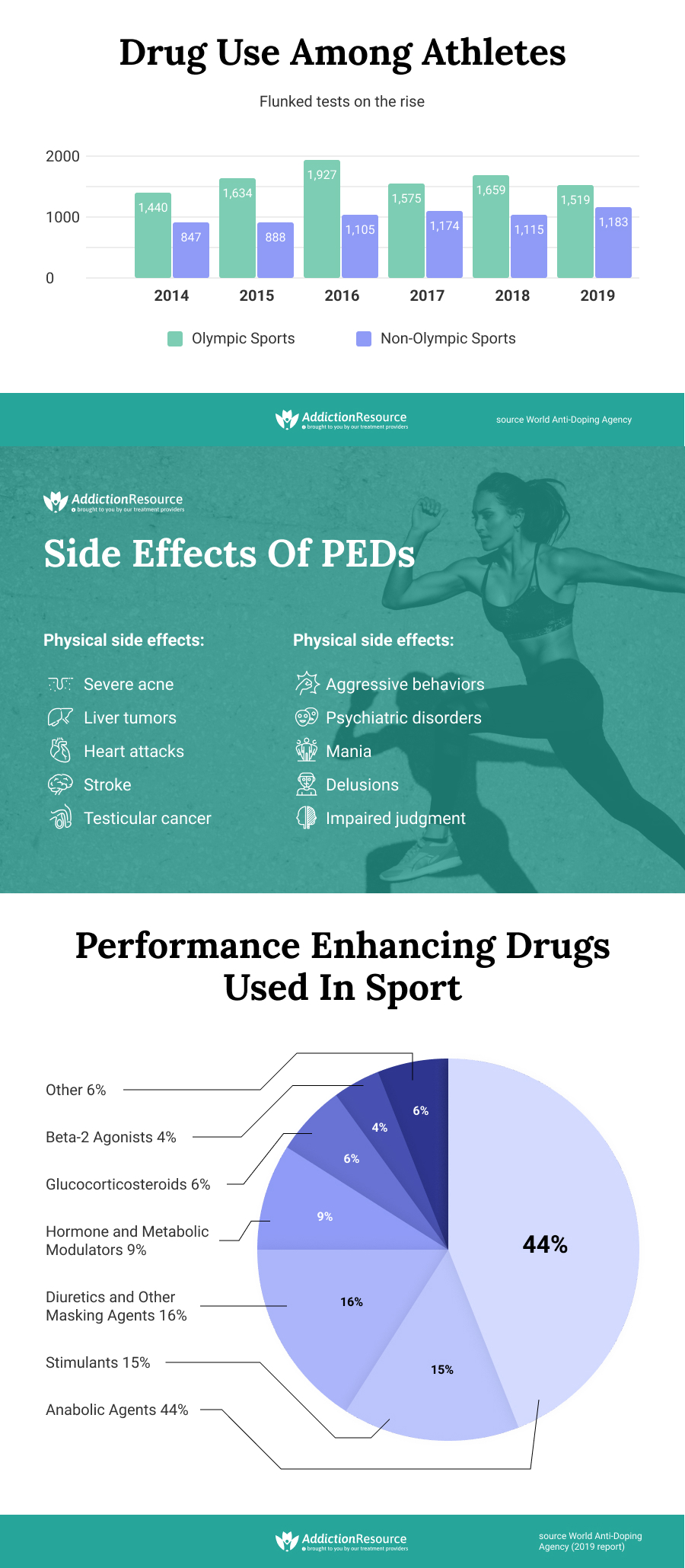Doping receives constant attention in the media, scientific literature, and conversations across the world. As can be seen from the infographic, drugs are present in virtually every sport, both Olympic and Non-Olympic. Athletes take different types of performance-enhancing drugs (PEDs) despite the potential side effects and the consequences following an anti-doping rule violation. AddictionResource authors say that some PEDs (e.g., steroids, amphetamine, cocaine) are addictive. In fact, about 32 percent of those who misuse anabolic steroids become dependent and experience withdrawal. There’s no specific rehabilitation program for people addicted on PEDs. They receive the same treatment as people addicted to drugs.
The problem of using performance-enhancing agents (PEDs) is not new. Anecdotal reports go back to ancient Greece when competitors drank ‘magic’ potions or ate exotic meats to get an advantage over their rivals. And it doesn’t seem that the use of drugs to enhance athletic performance will go away any time soon.
In the infographic, you can find the rates of drug use among athletes, the types of PEDs, the risks of taking them, and the sports where this practice is most common. AddictionResource authors add that stepping up use and further PEDs abuse can lead to dependence and addiction.
Infographic by: addictionresource


